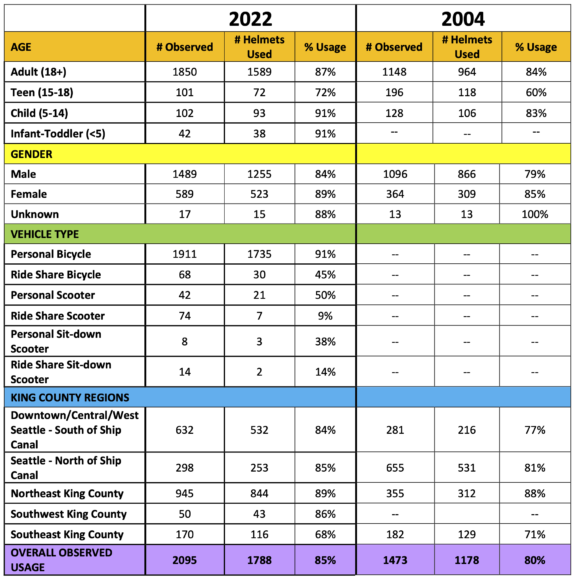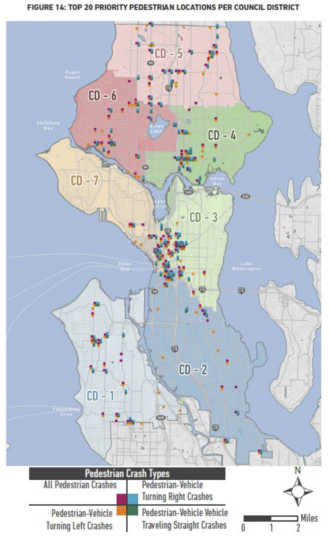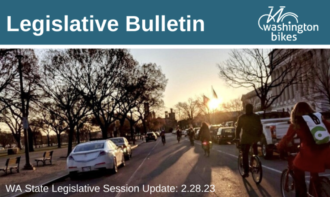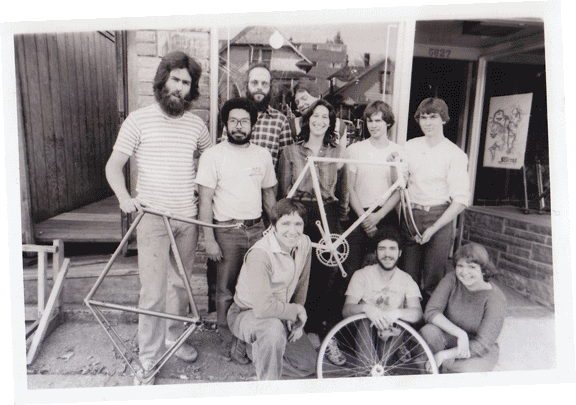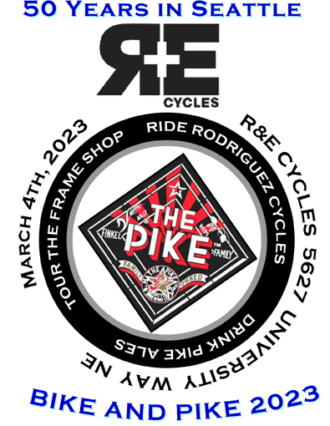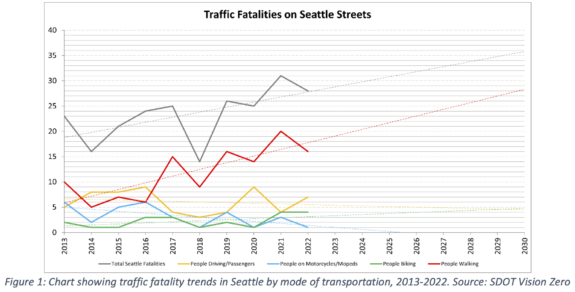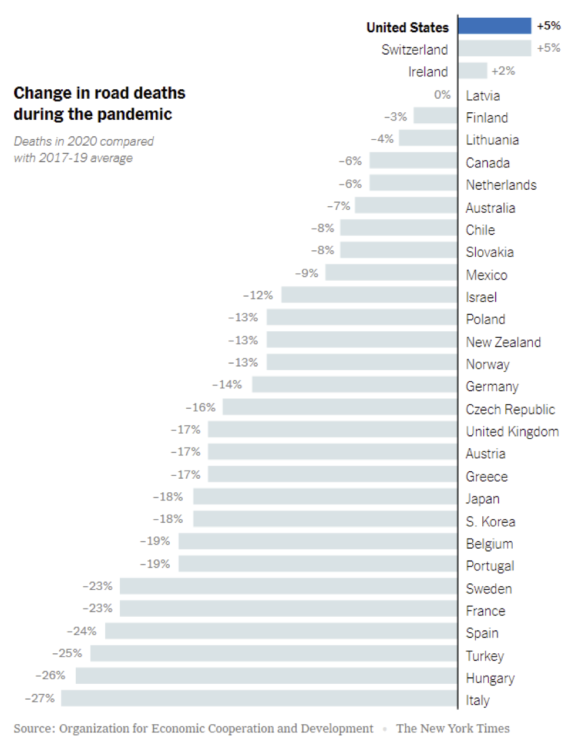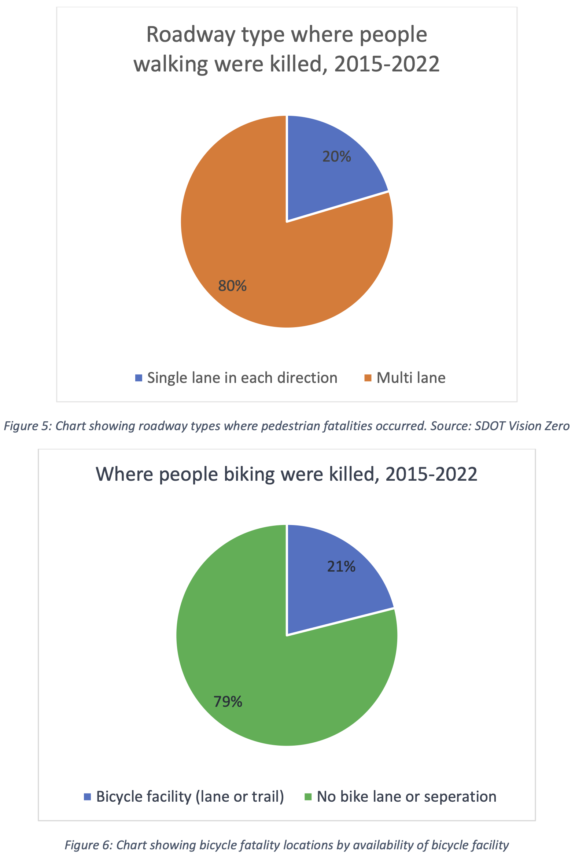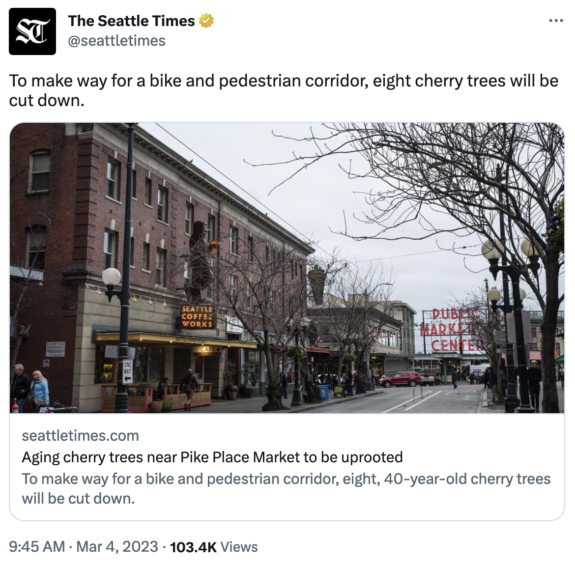 Contrary to what you may have read on Twitter or saw written on yellow signs on trees on Pike Street near the market, Seattle’s decision to cut down cherry trees on the block between 1st and 2nd Avenues has nothing to do with bike improvements.
Contrary to what you may have read on Twitter or saw written on yellow signs on trees on Pike Street near the market, Seattle’s decision to cut down cherry trees on the block between 1st and 2nd Avenues has nothing to do with bike improvements.
In fact, the project removing the trees will also remove the existing two-way bike lane on this block, a significant downgrade for biking. The change is part of the larger “Pike Pine Streetscape and Bicycle Improvements Project,” which does include exciting bike lane improvements between 2nd Ave and Bellevue Ave. However, the project’s design for the block with the doomed cherry trees will dramatically expand the amount of space for cars at the expense of all other users. Below are some concept images from the project’s outreach materials:
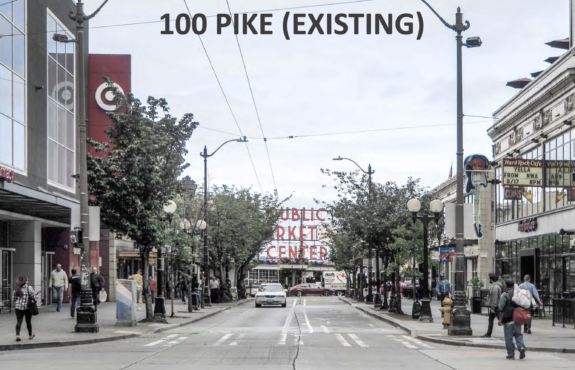
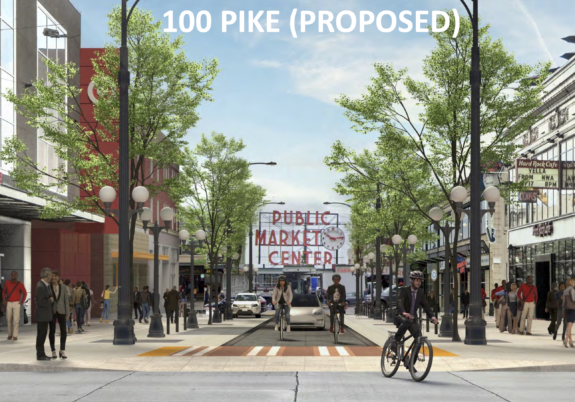 Looking at this, and you can see why it was so frustrating to read a Tweet from the Seattle Times that said, “To make way for a bike and pedestrian corridor, eight cherry trees will be cut down.” The exact opposite is true. This block’s design deletes the entire two-way bike lane and slightly reduces the sidewalk width in order to add car parking and widen the driving lane. Just because the concept image creators desaturated the colors in the “existing” photo doesn’t mean the “proposed” image is better. Here’s let’s try it another way:
Looking at this, and you can see why it was so frustrating to read a Tweet from the Seattle Times that said, “To make way for a bike and pedestrian corridor, eight cherry trees will be cut down.” The exact opposite is true. This block’s design deletes the entire two-way bike lane and slightly reduces the sidewalk width in order to add car parking and widen the driving lane. Just because the concept image creators desaturated the colors in the “existing” photo doesn’t mean the “proposed” image is better. Here’s let’s try it another way:
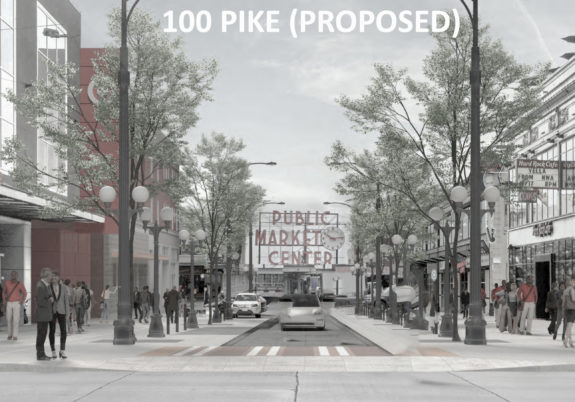
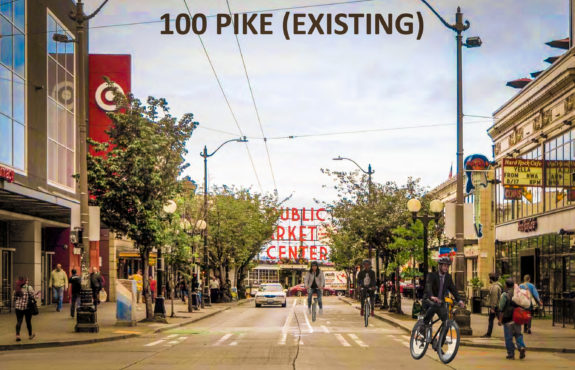 For what it’s worth, Seattle Bike Blog would happily see the city cancel this one block of the project and more forward with the rest. This “curbless” street concept has yet to actually prove to be an improvement for walking or biking in Seattle, though they keep trying it (Denny Way near Capitol Hill Station and Bell Street are two such examples). In our deeply-ingrained car culture, cars will occupy every inch they can. The wider the driving lane, the faster people will drive, and if there is space that is not physically blocked, people will park their car there or use it to pass someone else. A curbless street is only better for people walking and biking if there are significant obstacles for cars or if cars are not allowed at all. The proposed design is worse in every way.
For what it’s worth, Seattle Bike Blog would happily see the city cancel this one block of the project and more forward with the rest. This “curbless” street concept has yet to actually prove to be an improvement for walking or biking in Seattle, though they keep trying it (Denny Way near Capitol Hill Station and Bell Street are two such examples). In our deeply-ingrained car culture, cars will occupy every inch they can. The wider the driving lane, the faster people will drive, and if there is space that is not physically blocked, people will park their car there or use it to pass someone else. A curbless street is only better for people walking and biking if there are significant obstacles for cars or if cars are not allowed at all. The proposed design is worse in every way.
So keep the cherry trees until they actually need to be replaced. As David Kroman’s story in the Times notes (unlike the Tweet, the story gets the details right), cherry trees don’t love being in urban tree pits and might not last much longer. Maybe by then we’ll have a design for this block that truly does make it better for walking and biking.

